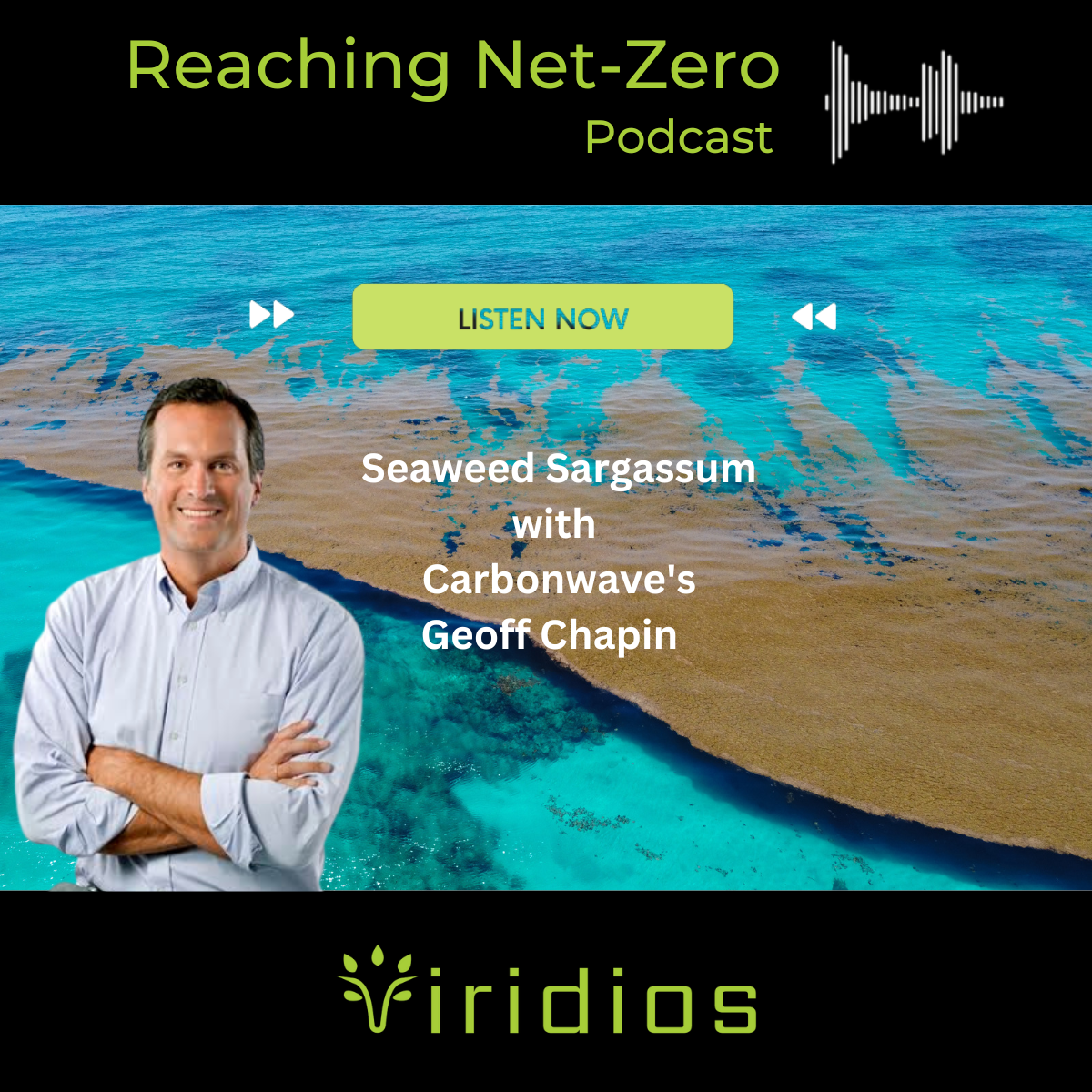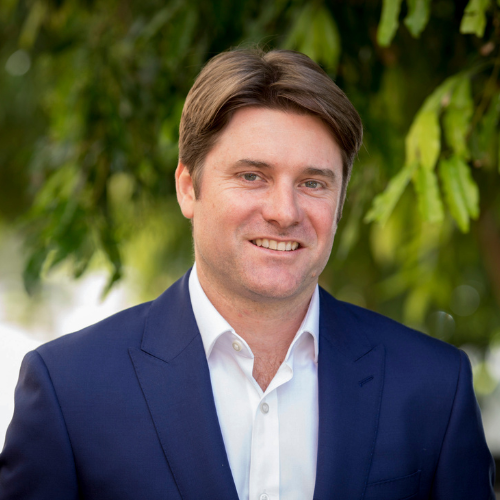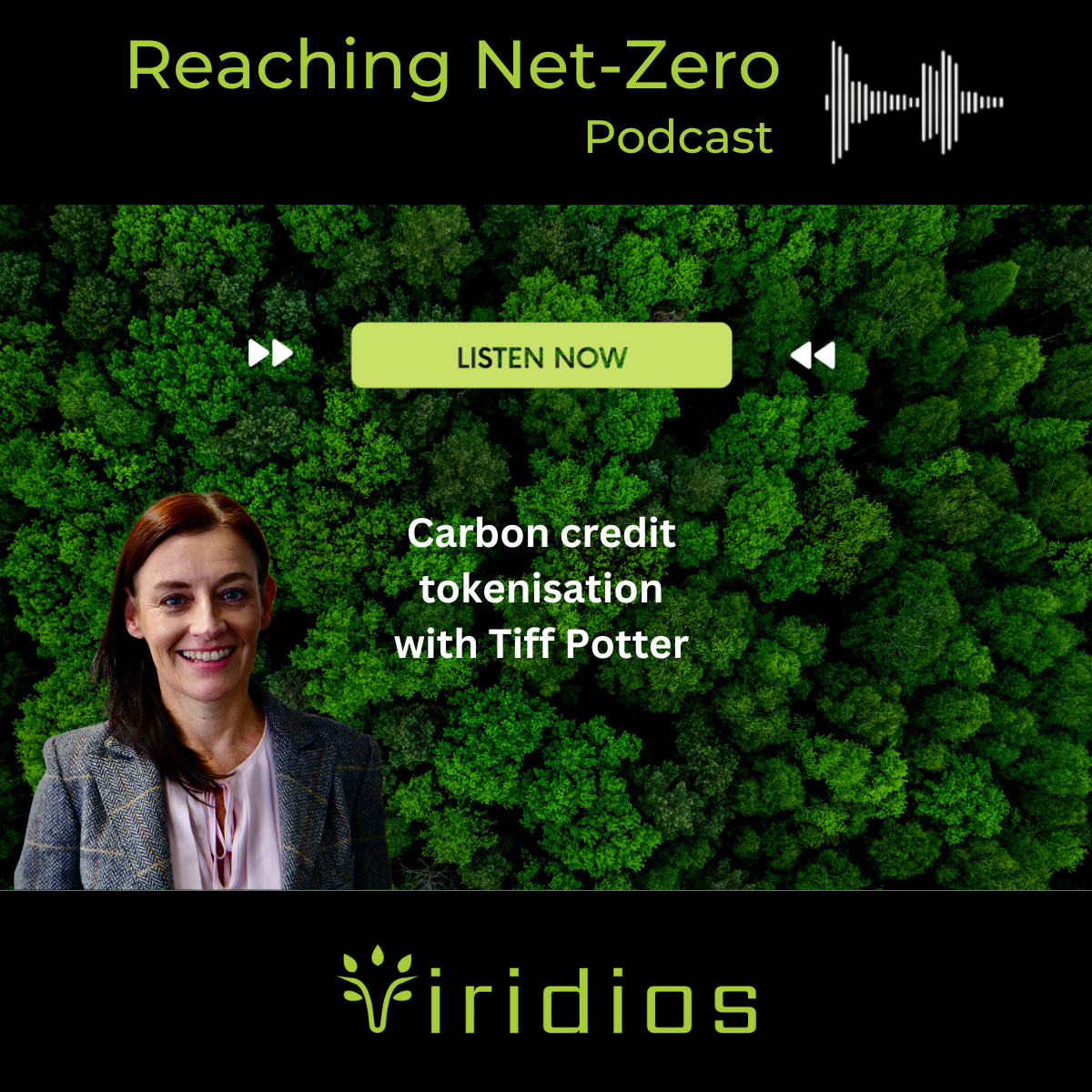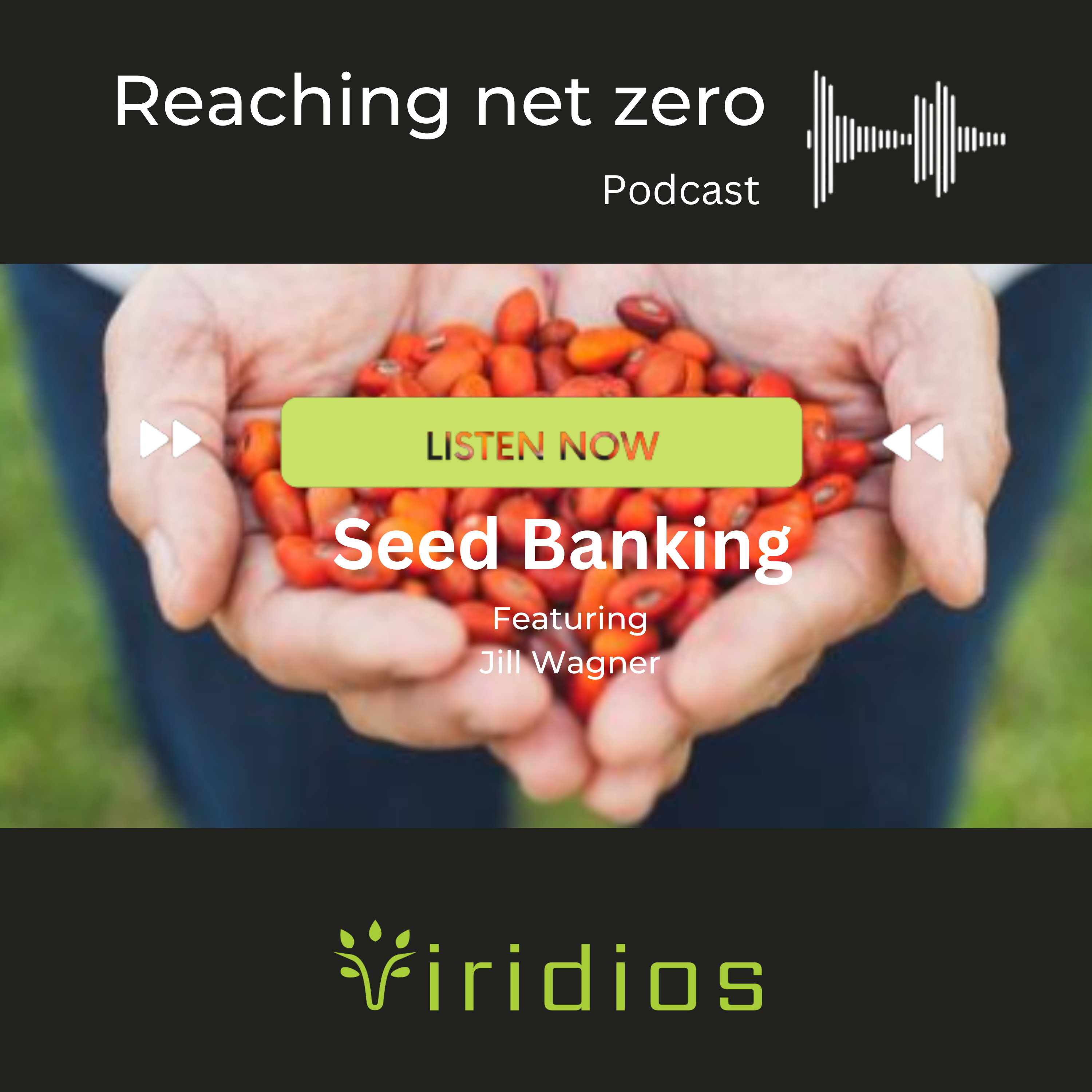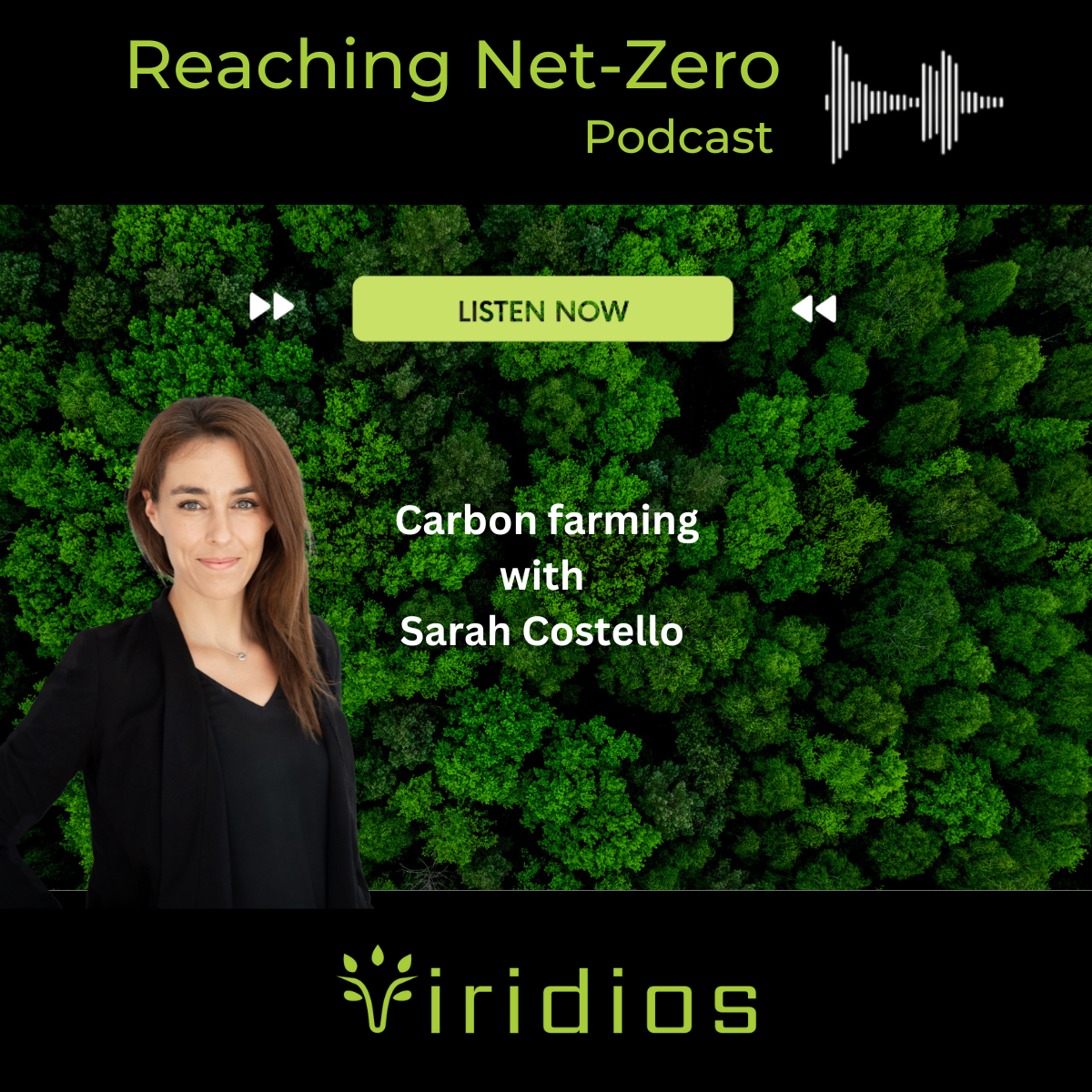Episode Transcript
Speaker 1 00:00:02 Welcome to Verios Capital's reaching Net zero podcast. I'm your host, Tom Godfrey, and in this episode we look at Blue Carbon and talk with Jeff Chapin. Jeff is c e o of Carbon Wave and has spent his career developing innovative environmental solutions from teaching economics and maths in Massachusetts to running one of the world's most innovative nature-based solutions companies, which takes seaweed that would otherwise rot on beaches and turns it into a range of products for agriculture, textiles, personal care and cosmetics. Jeff is a true environmental entrepreneur. Jeff, welcome to the Reaching NetZero podcast.
Speaker 2 00:00:43 Thanks, Tom. Great to be on. Thank you for having me.
Speaker 1 00:00:46 Now, look, I, I have to ask you, what was it like teaching economics and math and how did that then lead you into a career in environmental sciences?
Speaker 2 00:00:57 That's funny. I, I wish I had spent more time in teaching. I joined, I went and taught at my old alma Mater high school because they needed someone and I was thrilled to contribute to a great school and education that I felt that I was a beneficiary of. So I was in consulting beforehand coming out of college. They needed someone I helped as long I helped for a while, but then really moved back into consulting with an eye towards using consulting to help bring about change in the world, uh, specifically through Bridge Span Group, uh, which was spinoff of Bain Consulting, where I spent time as well and was able to work for impact organizations, uh, through the Bridge fan work. Uh, and then decided I needed a public policy and business degree to integrate business and policy work, uh, at that level. So I did that in, in Boston and then moved on towards, uh, the environmental piece of this, which really became the focus around 2007 when I finally became aware of the magnitude of the problem. I was part of the cohort that Al Gore influenced and, and woke up. And so I, from then on, I had to be working in this space, which is why I went into the energy efficiency space, uh, and then eventually to this,
Speaker 1 00:02:04 Uh, sounds like a great journey. And you, you mentioned there that you've been focused on impact now. So let's talk about the impact carbon wave is having and, and take us back to January, 2020. Uh, when you founded it, the world was on the verge of a covid pandemic, but you clearly saw an opportunity.
Speaker 2 00:02:23 I I did. I, I, I felt like this was gonna be the emergency for the next few years. The covid, uh, crisis ends, but yet at the same time I felt like, wow, this means we're gonna lose time in, in dealing with climate change. Cause it's just gonna be harder to deal with climate change in advance, everything. Um, so I took the risk of putting personal capital and, and, and a couple of family and friends capital to work in trying to find a solution to make something out of sargassum because specifically because there were many projects around seaweed and still are, but sargassum is different. Sargassum is already being produced by the ocean in massive quantities, and it is actually so massive that it, when it rots on beaches, it releases methane and it's a real problem to the communities and it's a social injustice, et cetera.
Speaker 2 00:03:15 So I just wanted to sit, find a way to take Sargassum and make a market-based products out of it so that we can stop the rotting, avoid the methane, and then make a market-based reason to collect it and, and treat it responsibly instead of what it was usually being left to, which is, you know, going to landfills, being put in the rainforest or left to rot, uh, and leak, uh, arsenic and other, uh, painful chemicals. So we wanted to find a way to make something valuable out of that. Uh, but it was a more of a challenge than other seaweeds for sure.
Speaker 1 00:03:48 Right. Was there a particular moment that gave you the idea? So when you, you were considering all these different options, you, you mentioned obviously back in 2007 Al Gore and there was a, a growing movement to do something on climate change. Was there a a moment that that idea came to you?
Speaker 2 00:04:06 You know, I did read Paul Hawkin's drawdown where there are hundred solutions for the planet, um, and macro algaes featured in there. Um, but I also felt that what we, the world needed is something that is ubiquitous anyway, being turned into valuable products that can lock down carbon. So for example, Sargassum has a high nitrogen to carbon fixation ratio. Um, so the, it's actually low in that way. I've framed it so that for every nitrogen molecule it takes up, it takes up a fair bit of carbon. So if you are to are two, mitigate, mitigate that, grow it in large quantities, do something useful with it, um, you can actually, professor in York out of Fiji wrote that if you were doing macro algae at scale and a couple percentage points of the entire ocean, you could offset all of human emissions. And it was, at that time I was feeling like we weren't making enough progress.
Speaker 2 00:05:02 There's still, still, we all, many of us still feel that way. Uh, we certainly aren't on track, but if you could come up with a bio-based solution that mimics nature and it, and it is in fact algae is responsible for, for the the oxygen carbon dioxide balance we have in the world today, uh, from billions of years ago. So why wouldn't we use it now to write the course a bit and you can scale it up so much better than you can on any terrestrial solutions. And it really doesn't require infrastructure to attach to, it doesn't require hatcheries. It floats on the ocean's surface, absorbs the pollution of the nitrogen absorbs carbon and stays at the surface so that it's easy to collect and you don't need to, uh, drill lines and all sorts of issue. You don't have to deal with lines and hatcheries and difficult collection methods.
Speaker 2 00:05:54 This is a, a unique seaweed. The problem is very difficult to extract the valuable components from it, the alginates, the long chain polymers. And that's what we had to spend two years during Covid figuring out, because when you apply the same methodologies for other seaweeds to sargassum, it completely breaks down the molecules and none of it works. So we had to come up with a novel process, uh, one in which we filed IP for so that we could actually go and develop the technology and create all these products outta Sargassum. But not until you take a very difficult seaweed, uh, like that can you actually have a huge impact until you figured out how to make the products and extract the valuable ingredients from it.
Speaker 1 00:06:33 It, it, it sounds like such a, a clever of solution. Can you, can you step us through the business model? How does the process work when you go about collecting the seaweed? So you've obviously identified areas, um, in the Gulf of Mexico where there's a, a lot of it. What then happens, explain to us, you know, how you go about collecting and turning into products.
Speaker 2 00:06:57 Yeah, so we are fortunate to find a, a group in the Cancun region of Mexico, the Quintana ru area, that state where 74% of all the sargassum that reaches land ends up. So we partnered with Enol, which is a, a group led by Felix Navarrete in that area. Uh, we literally, uh, brought them on board with us and they were excited to join cause we had a solution. And we turned what was a collect a burgeoning and, and good collections business into an entire fully vertically integrated proc process. And what that means is we get paid by the ho the resorts down there right now to collect it, uh, from the beach. We often just take it from the container next to the resort that they've had people put the sargassum in. And instead of someone, uh, a company taking it to a landfill, we can bring it to our facility and our facility, uh, then can press the water out and create the different products from the water and from the pulp. And that's the collection piece of the whole business. Now, we don't always anticipate getting revenues for all that we collect. We're gonna scale this up in a big way such that that won't always be, uh, a separate business line that is, uh, integral to the whole process. But it's been a great business line for us. And, uh, we feel like we're, we're, the hotels are very supportive of the actions we're taking to help solve this problem. And there's, hotels are starting to spread the word as well.
Speaker 1 00:08:22 It sounds great. Now, you, you mentioned there obviously you, you're collecting all this sea and you're taking it to your facility now. There is a range of products that can be created for agriculture, textiles, personal care, and cosmetics. Can you give us a little bit of color around that? What, what sort of things, uh, as consumers, are we gonna start saying that is produced from this material?
Speaker 2 00:08:44 Right. No, we're excited because like many seaweeds, there are several options. You have. Um, we had to figure out exactly what Sargassum could produce, right, of new type of seed. No one's really, uh, commercialized it, no one has this extraction method, forgetting the, the long chain polymers and alginates out. But through evolution over a couple of years, we figured out we could do at least four or five different product areas. One, when we squeeze the water out in the beginning, we use an old Jack Daniels screw press, right? And we, we clean it, of course we treat it, we have a bunch of proprietary things, but literally we're squeezing the water out. And so that water, most of the arsenic comes out there when that's one negative of sargassum, of, of several. That arsenic, we figured out a way to get the arsenic out, uh, through proprietary filtration, but leave all the gooding ingredients in.
Speaker 2 00:09:32 And there are many bioactives in that product that have made it a proven bio stimulant for crops. And so that's the first category is bio stimulant for crops. It helps the crop develop a stronger immune system. It creates greater yield in crops, and it can also protect it against drought, et cetera. So what this is, is talk about circular economy, right? I mean, the entire sargassum bloom is caused by runoff from the Amazon basin, which has a lot of nitrogen from fertilizer up upstream. That is from the farming that's happened in the Amazon. As sadly, the forests have become farmlands. So all that nitrogen comes into the ocean ignites this bloom where at least able to take the bio stimulant from this and put it back on fields to increase yield and reduce nitrogen. And that's key. When you use our product, you can use less nitrogen on your field, which is also a, a greenhouse gas, uh, emitter as you, well as you know, sa.
Speaker 2 00:10:27 And the second one is an emulsifier. So we take the pulp left over, we turn it into an emulsifier through this proprietary process of extraction. And that emulsifier is a, is in all cosmetics and lotions and creams, and it bonds oil and water together to, to emulsify and liquefy everything together. And that's petrochemical based product. Traditionally, we're able to provide the first in the world all natural, uh, seaweed based emulsifier, which we're getting great traction on, uh, where we're selling in the, in the, in the tons on that. And so that's what our series A is for, is to build this facility, uh, to really ramp up production in the hundreds of tons. The other product we get from that is leather, and it's all a cascading biorefinery. So one ton of seaweed creates a bio stimulant, creates leather and emulsifier. And the, the leather alternative we're launching next year. And it has all kinds of impact, benefits from reducing cattle, et cetera. And it's one of the few that is really all natural and not using plastics or petrochemicals, but longer term we have access to plastics markets. We've won several awards in that space to develop plastics. And, uh, we're looking towards several other use cases in the future. But for now we're focused on the emulsifier, the leather. And I'm excited about the path.
Speaker 1 00:11:41 Uh, you, you mentioned there a number of the proprietary products you were able to generate. Uh, was there a eureka moment when you were going through this where it suddenly occurred to you that you'd cracked it?
Speaker 2 00:11:54 I think about, uh, it was really risky. In the beginning of Covid when we were doing these tests, we had no idea if this would work out, if our new extraction method could work. And, and it was, it seemed like an impossible task cuz there had been no real solution at scale with no r snic and, and all this great extraction. So I'd say it was a good year and a half before we even felt like I'd say mid, uh, 2021, we felt like, okay, there's something here. Because we had produced a bio stimulant that had some effect, uh, that was quite good, even back then. It's much better now. But we also felt like we could probably get the emulsifier done in another year's time. And so that's when we felt like, okay, this is something that has some legs. But since then we found other applications as well. So, um, it was, it was never one moment, but once we felt like we had two good products under our belt, uh, that was enough to really say, all right, we're off to the races and we started raising more significant funds,
Speaker 1 00:12:50 Turning our attention to, to carbon credits. You, you, you touched there some of the environmental benefits that it has. E explain to us how the process that you've created generates carbon credits.
Speaker 2 00:13:02 This to us is, is is one of the most exciting processes here that we're, that we're doing. I mentioned that that, that this sargassum bloom, it is sargassum is naturally occurring. That's, that's the Sargasso Sea off the east coast of the United States. But what's happened is the warming oceans and the increased nitrogen flowing outta the Amazon basin has really ignited this 5,500 mile long bloom that is the largest in the world. And that carries with it a lot of carbon. But the tragedy is that it floats westward across the Caribbean clogging the, mostly the eastern and southern facing beaches depends on the current, but it clogs all these bays that are traditionally really dependent on, on tourism. And it stinks and it leaks arsenic and worse, it rots in an anaerobic environment. It's all piled up like that and packed in it literally heats up and it, that process myogenesis releases methane.
Speaker 2 00:13:56 So it's terribly potent dangerous problem that no one knew how to deal with because it was such a cost center and really all people were doing was moving it from the beach to the landfill or the rainforest. So the emissions piece for us is huge because by processing it, we're able to stop that myogenesis, we're able to stop that rotting process and we can literally create good products out of it and create products that all of them displace fossil fuel based products, right? We can, we can reduce nitrogen through the bio stimulant. We can, we can, uh, reduce fossil based emulsifiers. We can reduce leather and use from animals, which has maths massive methane as as, as well as other impacts. And same with plastics, which are all petro chemically based. So that to us, there's three components. It's really the preventing of the methane in the beginning, the supplanting of products in the market. And then, then we're starting now to look at the end of life piece and how we can minimize that impact eventually.
Speaker 1 00:14:56 Now, we know a lot of companies out there are looking very, very hard at their net zero commitments. And as part of that piece, they're seeking to buy very high integrity carbon credits. So, you know, and and to me this sounds like such a great project. What would be your, your pitch to them, you know, when they're looking at all the different types of credits they can purchase, what, what would you say to them about purchasing credits like yours?
Speaker 2 00:15:23 Well, first thank you. I mean, we, we need all the above solutions, right? I mean, all kinds of carbon credits and that's why we're thrilled to partner with Rios and, and all the work that you guys do to bring those to the fore. I think what we feel most good about is that, uh, a couple things. Number one, we address a lot of the sustainable development goals in doing all of this. Um, I won't enumerate them here, but we're pleased to be applying to the gold standard, uh, uh, for carbon credits because we feel like they really value and and account for the sustainable development goal aspects of, of these carbon credits. Um, secondly, it is apparently there's a real premium on ocean-based methane projects. So the oceans, everyone was recognizing are the most scalable solution in a lot of ways, uh, without disrupting, uh, other crops or housing or wild lands.
Speaker 2 00:16:13 Um, and this can be done in a relatively mi a minimally invasive way. This sargassum it, it can, it can live in harmony with nature, but also can be used to, to reduce, uh, the carbon out that's out there. So ocean-based plus a methane avoidance, uh, coming out of the last crop, there's a real focus on methane as the, as enemy number one and the climate fight, and we have to start there. So this is sort of the, uh, the don't lose in the aspect of the fight, right? The first step in winning is don't lose. And if we re reduce a lot of methane, uh, it's gonna make it really hard for us to pull ourselves out. So let's stop all the methane projects that are out there releasing methane as much as we can.
Speaker 1 00:16:55 What did, what did you make of Joe Biden's comments recently about his approach to managing methane?
Speaker 2 00:17:01 I mean, I think, I think we need the, the, the federal government work is important. The way he's leading, uh, the charge from the federal government at least as well, using oceans and wetlands and, and, and focusing on that for climate, I think we need a lot of methane has to be a priority. Um, and, and anything we can do, the, the, um, the recent legislation, at least from the US now, where the US is finally starting to look like they might start to live up to, to their commitments. And we're very hopeful for the 20, 30 and 2050 goals from the US side because it's an incumbent on the US to take a much better leadership role than what they, what we've done. Uh, it's been a travesty in a lot of ways. And, and it, it's heart-wrenching and gut-wrenching to see that we almost put all this at risk. But I do think that, that if we step back up now and fulfill the promises as we need to, uh, there's a chance the rest of the world will say, all right, the US is serious now. And that's, that's the hope.
Speaker 1 00:17:58 Now, now what's your long-term vision for carbon wave?
Speaker 2 00:18:02 Yeah, so we are not gonna stop at just what's landing on shores, right? And that's for us where we can really start to make a gigaton difference when we get, so there's much more we can collect offshore that doesn't hit the shore. And we'll do that in a very responsible way. Uh, being careful about wildlife. We're, in fact we're partnering with, um, sea fields, which is looking at growing in the sargassum in the open ocean and controlled environments, uh, where we can actually start to have large, large scale, uh, farms. Much like I, as I mentioned Professor <inaudible>, uh, envisioned years ago. And this is the right seaweed with which to do this because it doesn't require the infrastructure in the ocean. It doesn't require hatcheries and lines and all that. So we're gonna move in phases. We're gonna move to other countries across the Caribbean from Mexico and, and, and we're already talking to countries that have this problem where we can collect, there are other regions of the world where we can collect the natural seaweed that's hitting the shores.
Speaker 2 00:19:01 We can move offshore and responsible ways farm this at real scale. And then when we start addressing the big markets, we're already taken on like plastics, uh, and potentially even, uh, markets like, like fuels. Um, and also potentially in product textiles and other things that are really sort of large scale, big biomass use cases of sinks or faucets and, and things that can, tubs that can really be, uh, don't have to be made out of porcelain with some partners we're talking with, or one in particular. I think we have a lot of hope for creating a lot of the products we need from something that is generated in the ocean that helps heal the ocean, but is at enough scale to make a difference. Now, obviously in the open ocean, we're not gonna have the methane avoidance because if it's not gonna hit the shores and we're creating it, that's different, but that's a forestation and we are creating new forest stocks in the ocean that will, uh, absorb the carbon that wouldn't have been absorbed before and wouldn't have occurred naturally. So we're excited to do that and that's our, our gigaton plan is to really expand that in different regions of the world to license our technology, to allow the world to use this so that everyone can take what they have, uh, sargassum wise and, and actually augment that and have a bigger impact on the climate than we ever could have if we didn't take that step.
Speaker 1 00:20:20 I I, if we were to speak again in 2030, how, how much of an impact do you think solutions like Carbon Wave will have had on helping the world push towards net zero?
Speaker 2 00:20:32 I think we're finally, for a while I have been dismayed at the progress. I'd say that the mo that the, the clean tech world has made, and I'm as big a, I'm a, I'm a, I'm a big part of that. I think there's plenty of, um, progress we haven't made that we want to, but recently I've started to see enough companies that are being really innovative in the space, taking carbon and making product out of it. Um, you know, the, there's an alpha, there's a, um, carbon to value challenge that we were a recipient for one of the prizes for. There are a lot of great PR companies in there that are taking carbon and making valuable products. And I think if we continue that and find ways to just rethink how it's easy to take fossil fuels right now cause we know how to do it, but we're starting to find ways to make product out of carbon that are very innovative and those, when scaled up, could help draw down the bathtub level of carbon that's in the air right now as well as offset what we are, what we are trying to reduce.
Speaker 2 00:21:32 So it's those kinds of solutions that are going to be needed because right now they have to be scaled up very fast. If we're gonna win this, um, we might ha you might say, we have the technologies today that exist, but those need to be exist at such a great scale that that is the challenge. How do you scale them up? And, and for us, carbon credits have been huge for that, both helping us attract investors, helping us make the projects work, uh, and giving us a signal, giving us a, a signal that there is money to be made from the carbon credits to go ahead and, and initiate these projects. And I think that's what's gonna make the difference around the world. All of these entrepreneurs are looking for what's the equivalent of the oil subsidy, right? What's the equivalent of, of the tariffs and, and the subsidies that have been given to fossil fuel based companies for those that are actually trying to clean up the mess. And that's why we're so we're, we so need these carbon credits and these inve, these entrepreneurs who are doing these projects, they're the ones who are gonna allow us to see how this can all possibly happen in enough time.
Speaker 1 00:22:36 Jeff, you've obviously been in impact investing for a long time. You're coming up with innovative ideas that have a very positive impact for the communities in, in which you're deploying them. What do you think is the one thing that needs to happen if the world is going to meet its net zero targets and we avoid catastrophic climate change?
Speaker 2 00:22:58 Yeah, what, what a question. Um, the one thing that needs to happen is a significant price on carbon, which is easy to say and has been tackled before, but carbon credits do represent a price on carbon. And it does not have to be a tax, it doesn't have to be, but it has to somehow become very meaningful. Um, because otherwise there are solutions out there that don't have as many valuable products as we have, right? That come out. We happen to have found a Venn diagram intersection of product that we can create at market parody value, lots of carbon credits that we could create and, uh, an ocean-based environment in which that can scale. But if you only have two of those or one of those components, it's hard to have. If you don't have the market-based products, it's very hard to scale up your solutions.
Speaker 2 00:23:54 And what we need is every possible solution for pulling down carbon needs to have a business model behind it. And that is a combination of carbon credits and hopefully other things, but that's what's leading the way right now. And that's really the effective pricing that, that we as entrepreneurs all need. And then we need the financing backers, like so many, there are so many more backers of climate positive companies now than they used to be. That is heartening because you cannot scale without the financial backing required to do that. And people are taking a bit more emphasis in their portfolio allocations towards doing something meaningful. And that's made a big difference. And so we're grateful to see that. And I, I think, I think it's only going to get more pressing. There will eventually be, as one of my colleagues on the board of Prime Coalition said, there will be the floodgates of despair, which will be capital that is all of a sudden just unleashed in massive amounts because there's somewhat of a panic. And our job as a globe right now is to have that money flow before we get to the panic stage. I think we're just starting to see that. But, um, credit to Alicia Seiger and the PRI Prime coalition is a great organization taking money and bringing it into this space. Um, we need to avoid the floodgates of despair, get a lot of funds out there that can scale these solutions quickly enough before it becomes real despair.
Speaker 1 00:25:23 Jeff, thank you so much for joining the Reaching NetZero podcast and sharing carbon Wave's story. We look forward to seeing you
Speaker 2 00:25:31 Succeed. Well, thank you for the support and for, for telling our story. We're grateful to be.
